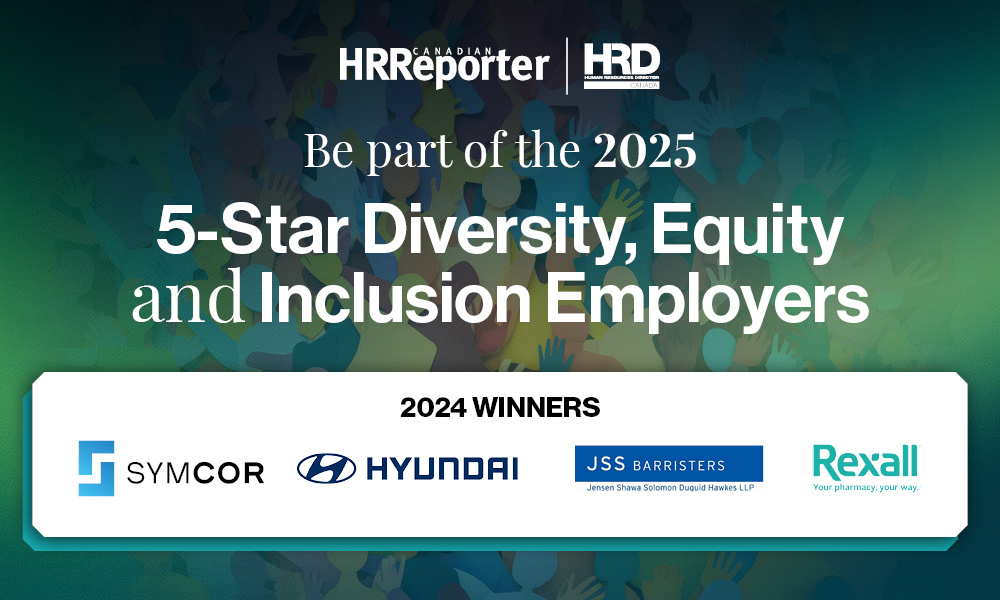People need the psychological safety to say, 'Yeah, I tried it and it didn't work, I lost an hour there,' says academic

A recent analysis of FTSE 100 and S&P 100 company annual reports has revealed a troubling trend: while 69% of UK and 76% of US companies identified technology as a strategic priority, only 7% of UK and 8% of US companies were prioritizing skills and training.
Illustrating this point further, mentions of “AI” in corporate strategy were high – nearly half of all companies included in the analysis – yet only a minority referenced AI training for their workforce.
Terri Griffith, professor of innovation and entrepreneurship at the Beedie School of Business, has been studying the human side of technological change since the 1990s, and says there has always been a consistent gap between what organizations say they value and where they allocate resources.
“If you ask people ‘How important is the human side of a change, any technological change?’ … they'll say, ‘Oh, the people, they're so important. They're the most important thing,’” Griffith says.
“And then when you ask them to show you the budget, there's nothing there.”
Organizations often prioritize the acquisition of technological tools over preparing employees for how to use them, she points out – because the purchase of a new software or hardware is easier to account for.
“They just don't spend the money because it's harder,” she says.
“It's easy to say, ‘Oh, I'm going to buy that piece of software. I'm going to subscribe to that and pay that money, I'm going to buy that computer, and I know how it depreciates.’ But it's much harder to do that kind of accounting on the human side.”
Training for adaptability to tech, not just tech tools
A 2025 report from the Organisation for Economic Co-operation and Development (OECD), AI Skills and Capabilities in Canada, aligns with Griffith’s view, showing that while employers are rapidly adopting AI technologies, investment in upskilling remains uneven.
According to the OECD report, demand for AI-related roles – particularly data scientists, AI researchers, and cloud engineers – has grown across Canada’s major provinces. But fewer employers are developing training programs that equip employees to adapt to evolving technologies.
Griffith warns employers against focusing training efforts too narrowly.
“What I don't want to see is training for this particular AI – I want to see training about how you come to understand a new technology and integrate it into your work.”
Instead of preparing workers for a specific system or language, Griffith endorses a training focus on developing overall digital adaptability – essentially teaching people how to assess new tools and adjust their workflows accordingly.
Designing space to experiment and share
Griffith also emphasized the importance of workflow structures that support experimentation, stressing that learning to work with new technologies requires giving employees time and space to do so – and, crucially, a culture that values trial and error.
“They need to have the opportunity to spend a little extra time doing that experiment, and finding out what the result was, and then you have to have the opportunity to share it,” she says, and adds that this essential sharing of information remains rare in organizations.
“One of the things that remains kind of amazing to me is the number of organizations I talk to that don't have a ‘lunch and learn’, or even a Slack channel, where people can just say, ‘Hey, I tried this, and this is how it worked.”
Griffith advocates a framework built around three elements: time to explore, time to test, and a venue to share the outcomes.
“Given that I see so few organizations having that sharing mechanism built in, I'm going to just say, that's got to be at the core of an organizational change,” she says.
“Since these technologies change so quickly, you're not going to be able to constantly go back to your technical experts … you have to kind of have that opportunity to do it yourself. And maybe what we need, because we're all human, is to build that in as a structure.”
Psychological safety and retention
As new technologies become more complex and change more rapidly, it’s critical for employers to create psychologically safe environments where employees feel comfortable admitting failure.
“Most organizations have some kind of a stand up meeting or a come together of some form,” she says. “Block out some amount of time, even if it's just a 15-minute discussion that's on the agenda every time, about what did someone learn, positive or negative, about applying these new technologies in their work.”
However, for this process to be the most effective, it must be inclusive of missteps.
“People need the psychological safety to say, ‘Yeah, I tried it and it didn't work, I lost an hour there,’” she explains.
“But if they're sharing that, then everybody else in the team isn't going to lose an hour, right? Only one hour was lost.”
Workplace flexibility and small pilots
Training can also play a role in retention, especially when job tenure is a concern; employers now may be less willing to invest in long training programs with generally shorter tenures, but despite these concerns, Griffith says she has seen training act as a strong engagement tool when done right.
She suggests employers reframe education and training as a tool to encourage longer stays.
“I've seen plenty of people in MBA programs, for example, who stay at their organization throughout that degree program because of a connection that organization has to that degree program,” Griffith says.
“So it's a retention tool as much as it is a training tool.”
She adds that giving workers flexibility to apply new tools to their own workflows can make their roles more meaningful and efficient, also adding to retention improvements. “If I'm in an organization and I'm in a job and there's aspects of my work that are not my favourite parts, I can start to find technologies that might make those parts of my work go away and let me focus more on the aspects of my work I really do like.”
Again, she stresses that giving employees structured avenues to communicate their learnings is a key part of the equation.
From top-down mandates to team-level learning
The Multiverse report that analyzed the FTSE 100 and S&P 100 companies noted that only 10% of FTSE 100 and 4% of S&P 100 companies disclose how much they spend on training, despite the clear market signals that AI capability is now a core business function.
When specified, median spend per employee was £600 in the UK and $1,700 in the US. Griffith argues that any investment should include pathways for people on the front lines to experiment with and shape how technology is used.
“I've generally seen that if people have that three-step possibility, the chance to stop, look, listen, the chance to mix and try something new, the chance to share it – that the benefits outweigh the cost,” she says, suggesting that even a small test group within an organization can yield valuable insights.
“Maybe what organizations want to do is take a small pilot. You know, small bites for change are always a good plan.”
Keeping up with the pace of change
Because new tools are emerging faster than most companies can respond, Griffith says organizations need to move away from tool-specific training programs and equip employees to problem solve and learn to adapt to new technologies themselves.
“You're always going to be behind the curve if you're focused on a single technology or a single work practice,” she says.
“Instead [it’s about] this more generalized approach … tweaking the workflow, tweaking the tools you have available, tweaking your own skill set, and then finding out what happens, and making sure that gets shared broadly.”
Griffith adds that HR leaders are well positioned to model this approach, as they were among the first users to apply AI in hiring and screening practices.
“HR has been a front runner in applications of AI ... they can look to their own early experience and see the benefits they gained, as long as they did it in a generalized way,” she says.
“These technologies are changing faster than any technologies we've seen in the past. So I can't focus on one, I have to focus on this overall mindset.”




